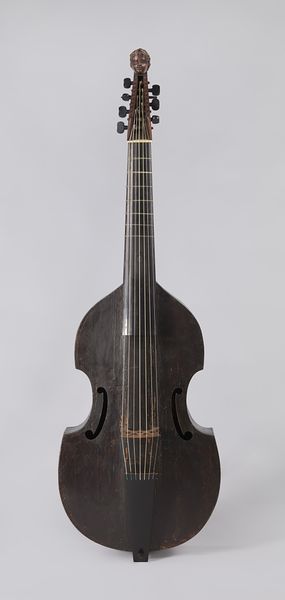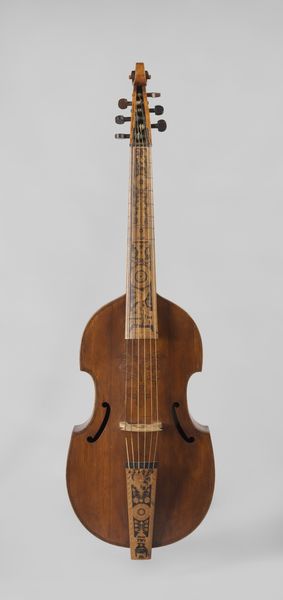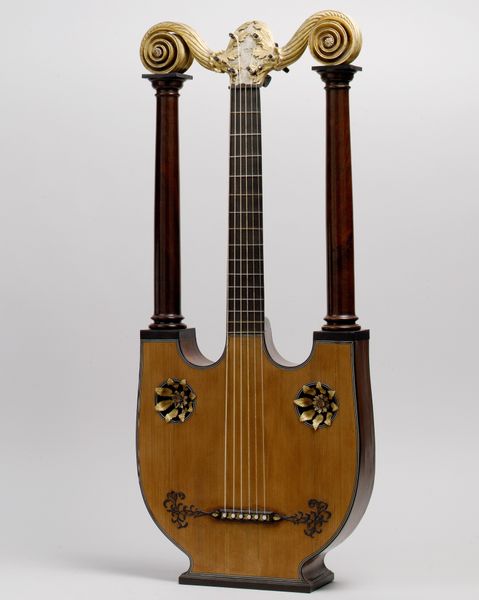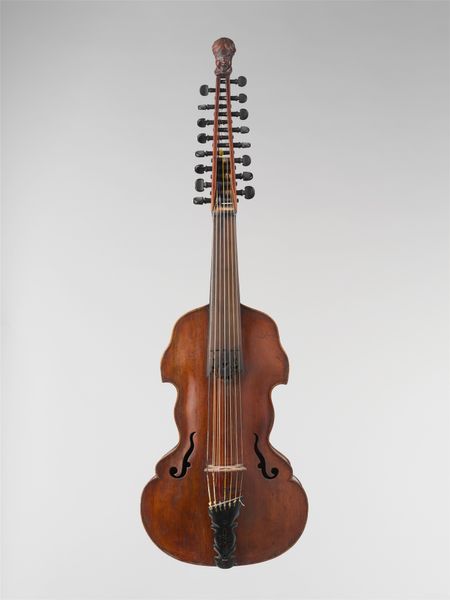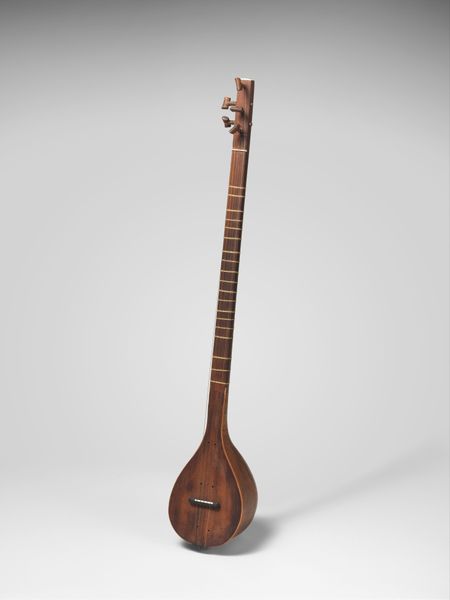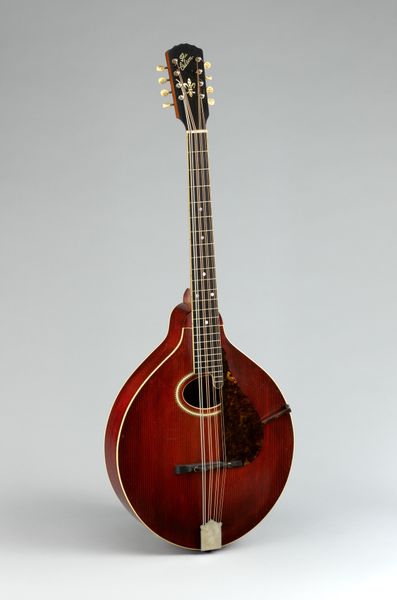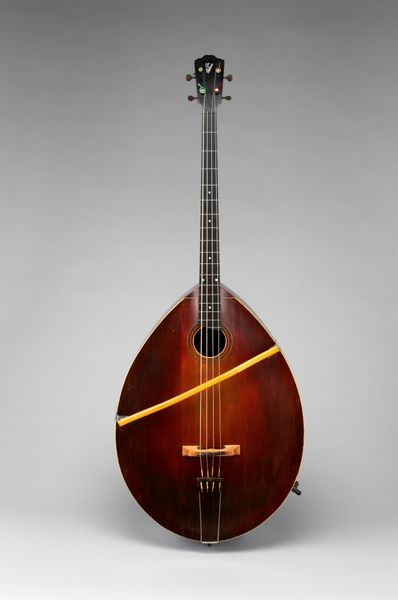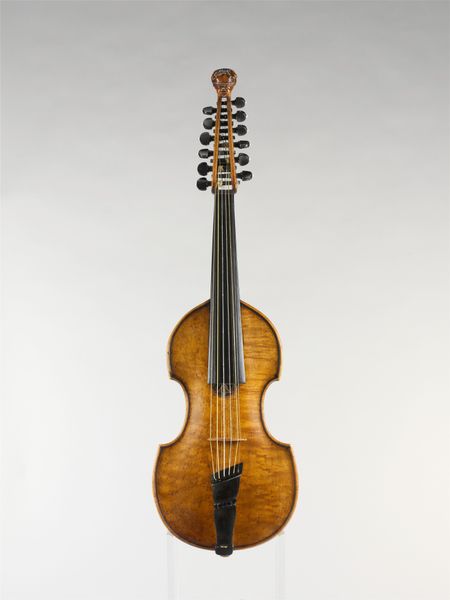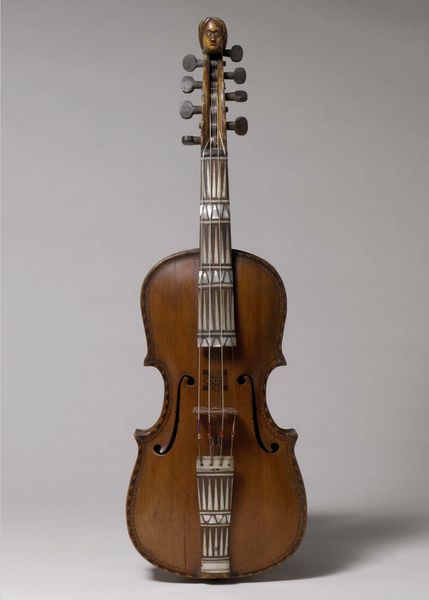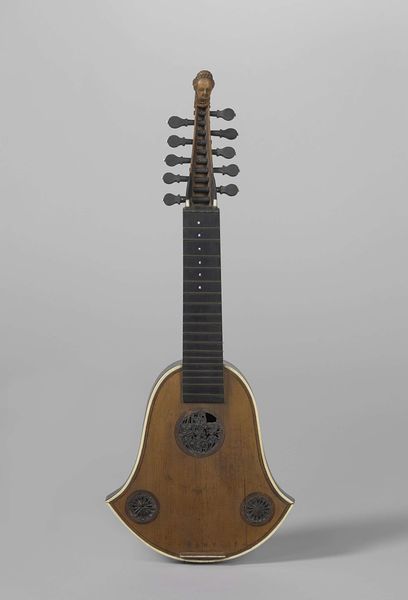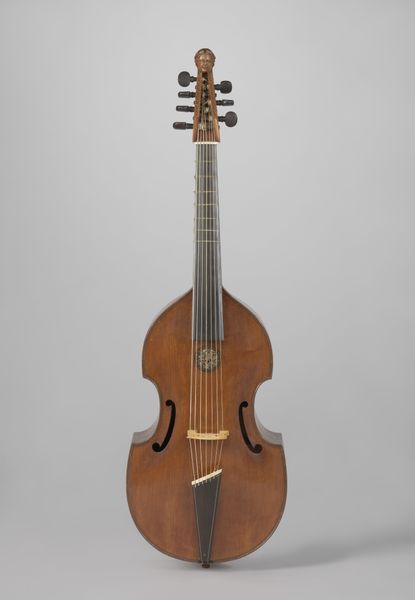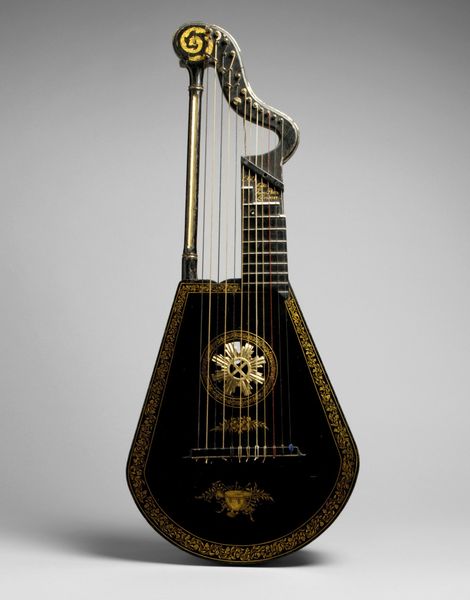
carving, intaglio, wood
#
portrait
#
carving
#
baroque
#
intaglio
#
wood
#
musical-instrument
#
decorative-art
Dimensions: Total Length: 916 mm
Copyright: Public Domain
Editor: We’re looking at a Baroque guitar, made between 1695 and 1699 by Joachim Tielke. It’s a stunning piece of decorative art crafted from wood, with carving and intaglio details. What strikes me most is the level of craftsmanship. What do you see when you look at it? Curator: Immediately, I'm drawn to the raw materials. Look at the wood itself - where did it come from? Was it a locally sourced material or imported? The guitar's craftsmanship begs the question of labor: who was involved in the various stages of production, from the initial design to the final polish? These are critical details in understanding the piece within its socio-economic context. Editor: So, you’re less focused on it as an object of beauty and more as a product of a specific labor system? Curator: Precisely! Consider the materials: wood, potentially ivory inlay. Who controlled those resources? What trade routes were involved? Also, consider the time spent crafting this. Was this a commission for the elite? Was it displayed or played, what was its function? That level of detail speaks to its value not just as an instrument but as a symbol of status. Editor: I see your point. The elaborate floral inlays on the neck contrast so starkly with the simple vertical stripes on the body; how might the choices of decorative material contribute to its message? Curator: Right! The juxtaposition highlights the various skill sets involved and, perhaps, a hierarchy of labor. Were the intricate carvings done by a master artisan while others handled the body? How does the combination challenge or reinforce notions of “high art” versus "craft"? These questions, to me, unlock a richer understanding. Editor: It's fascinating to think of this guitar not just as a beautiful instrument but as a record of the social and economic relationships of its time. Curator: Exactly. By examining its materials, its making, and its potential place in society, we get a more complete and nuanced view.
Comments
No comments
Be the first to comment and join the conversation on the ultimate creative platform.
